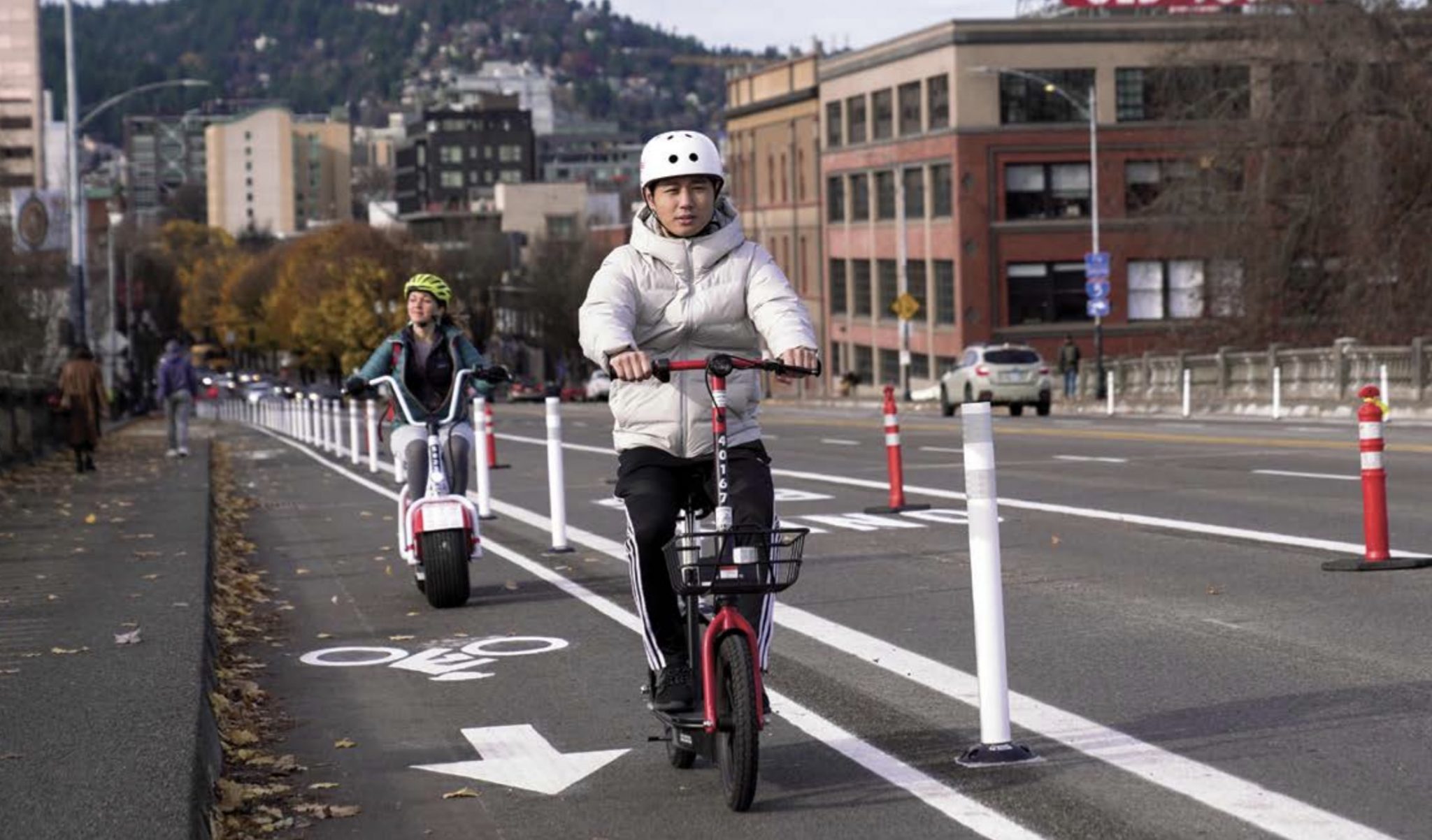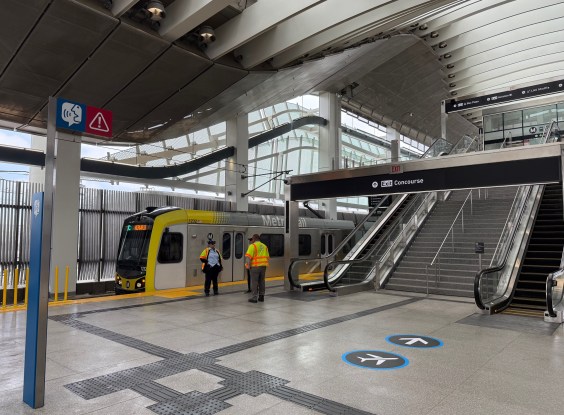Editor's Note: This article originally appeared on Bike Portland and is republished with permission. We suspect that the Portland Bureau of Transportation's findings will be applicable to communities across the country, and encourage city leaders across America to explore similar questions in their own places.
The winding road of shared electric scooters in Portland has taken another turn. Today the transportation bureau released a report (PDF) on scooter usage and outlined plans for a permanent system. Among the findings is that cycling-specific infrastructure is key to boosting scooter ridership, especially in places with high-stress streets like east Portland.
Portland launched e-scooters in summer 2018 as a pilot program. The Portland Bureau of Transportation deemed them a success and launched a second pilot in spring 2019 that’s set to end on December 31st.
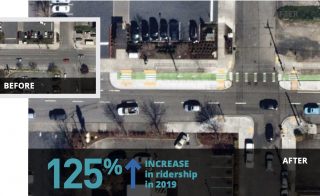
With lessons learned in courtship and positive signs that the scooters are a needed and valuable part of Portland’s transportation ecosystem, the Bureau wants to settle down with fewer partners and a longer-term commitment. There are currently six different companies offering scooters in Portland. This is clunky for both users and PBOT staff to manage. A key recommendation in the report released today says PBOT wants to work with 1-3 companies for the next 2-3 years.
Among the takeaways in the report is the impact of bike infrastructure on scooter usage. Not only did PBOT find that the presence of bike lanes led to much less sidewalk-scootering, GPS data shows 32% of all scooter mileage took place on protected bike lanes, unprotected bike lanes, bridge bikeways, paths, and/or neighborhood greenways. “E-scooter riders feel more comfortable when there is safe infrastructure to ride separate from cars,” states the report.
PBOT was also able to compare how ridership data changed with the construction of bike infrastructure that was built between the first and second pilots. In Waterfront Park for instance, the construction of Better Naito in 2019 led to a 55% increase in riding on Naito and a subsequent 45% decrease on the park path (this also had to do with signage warning people to stay out of the park and some “geofencing” from scooter vendors).
The new protected bike lanes on the Halsey-Weidler couplet in Gateway also appear to have impacted scooter usage. PBOT analysis shows a 125% increase in trips between 2019 and 2018. And on 102nd where new bike lanes were installed, there was a 22% boost in ridership. These increases come even as overall e-scooter ridership was lower in 2019 than 2018.
These findings show that cycling advocates would be wise to embrace scooter riders in order to strengthen and diversify their push for more dedicated infrastructure. “Bicycling is often associated with white-dominant culture,” PBOT writes in the report, “and e-scooters may or may not share that association.”
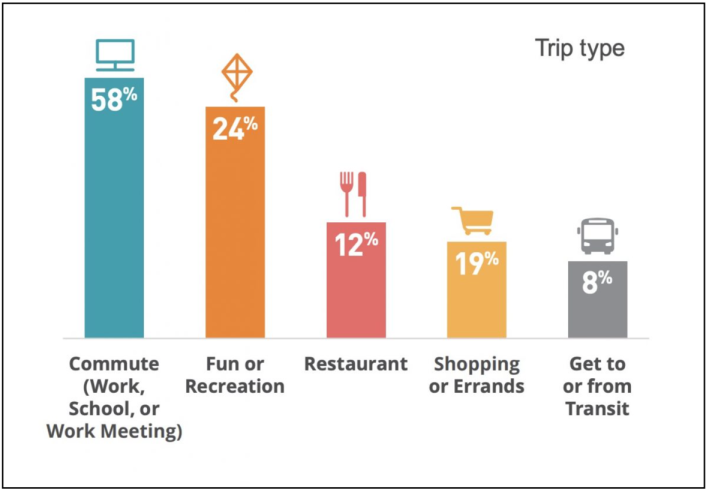
The recommendation of a permanent program makes it clear the City of Portland sees scooters as an integral part of the modal mix.
While some scooter trips replace bike trips, data reveals that scooters fill a different need: The average trip length for e-scooter riders is just over one mile and less than 14 minutes; the average (non-electric) bike share trip is over two miles and 25 minutes.
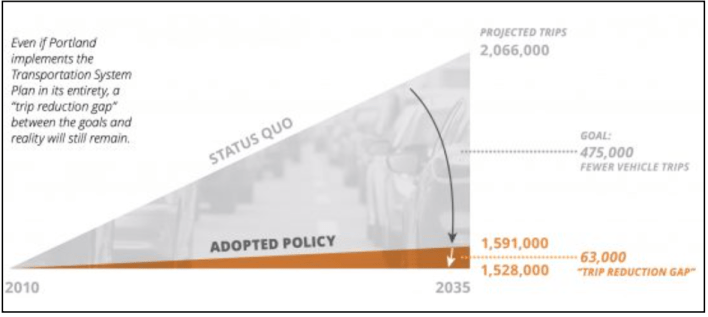
With the climate change catastrophe staring us directly in the face these days, PBOT also sees scooters as a key way to reduce car abuse. The city’s Transportation System Plan calls for 475,000 fewer daily car and truck trips by 2035. However even if we succeed with adopted plans, we’ll still come up with a “trip gap” of 63,000 daily trips (see graph at right). “If new mobility services like e-scooters can provide an attractive option that reduces car use and car ownership, they may help close this ‘trip gap’ and meet city congestion and climate goals,” states the report.
And of course e-scooter trips are much more earth-friendly than car and truck trips. PBOT estimates scooter riders have helped Portland lower carbon emissions by 167 metric tons and have removed the equivalent of 27 passenger cars and trucks from the streets over the 2019 pilot period.
Along with the report, PBOT released a scooter data dashboard and survey. Get all the info and links here.
